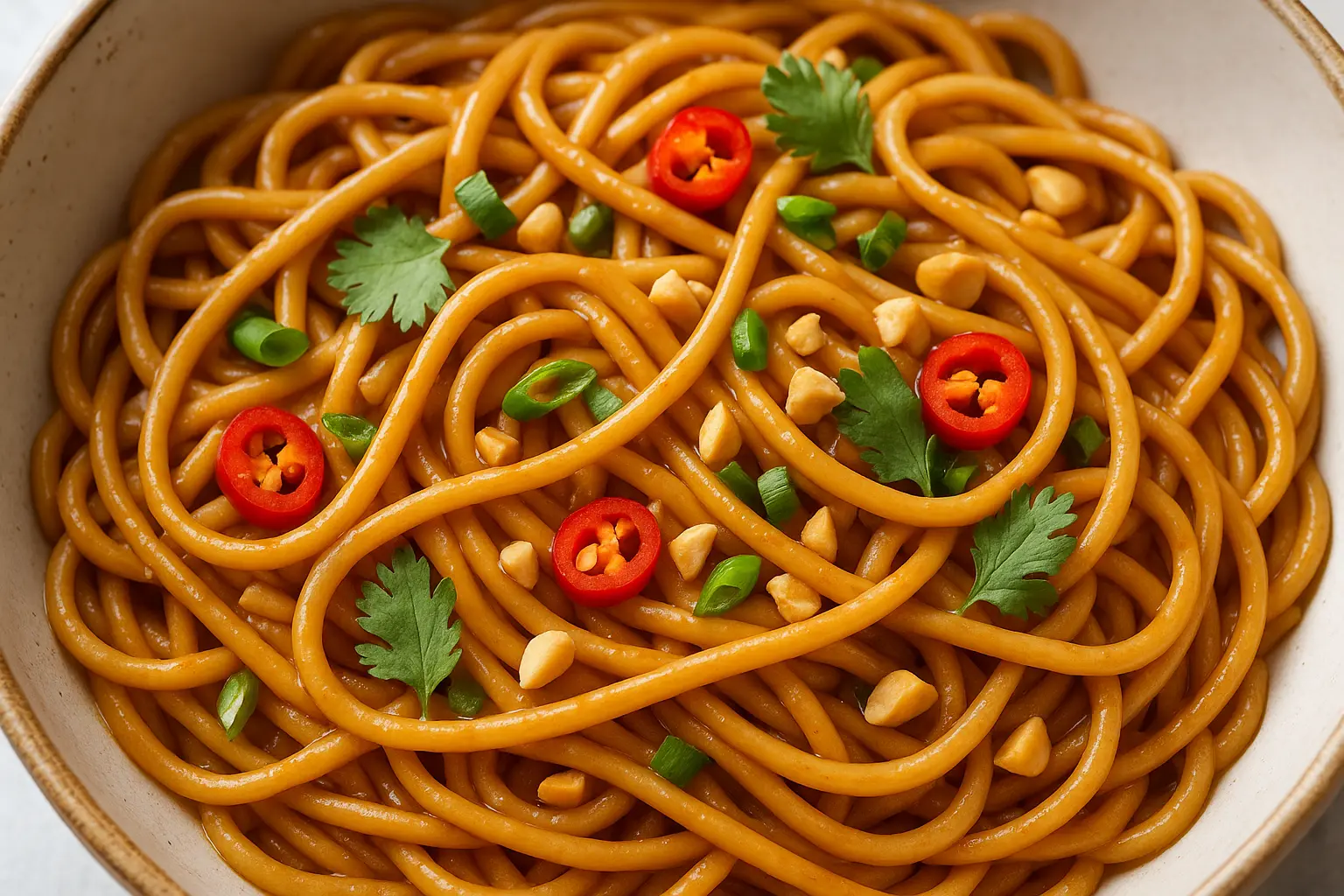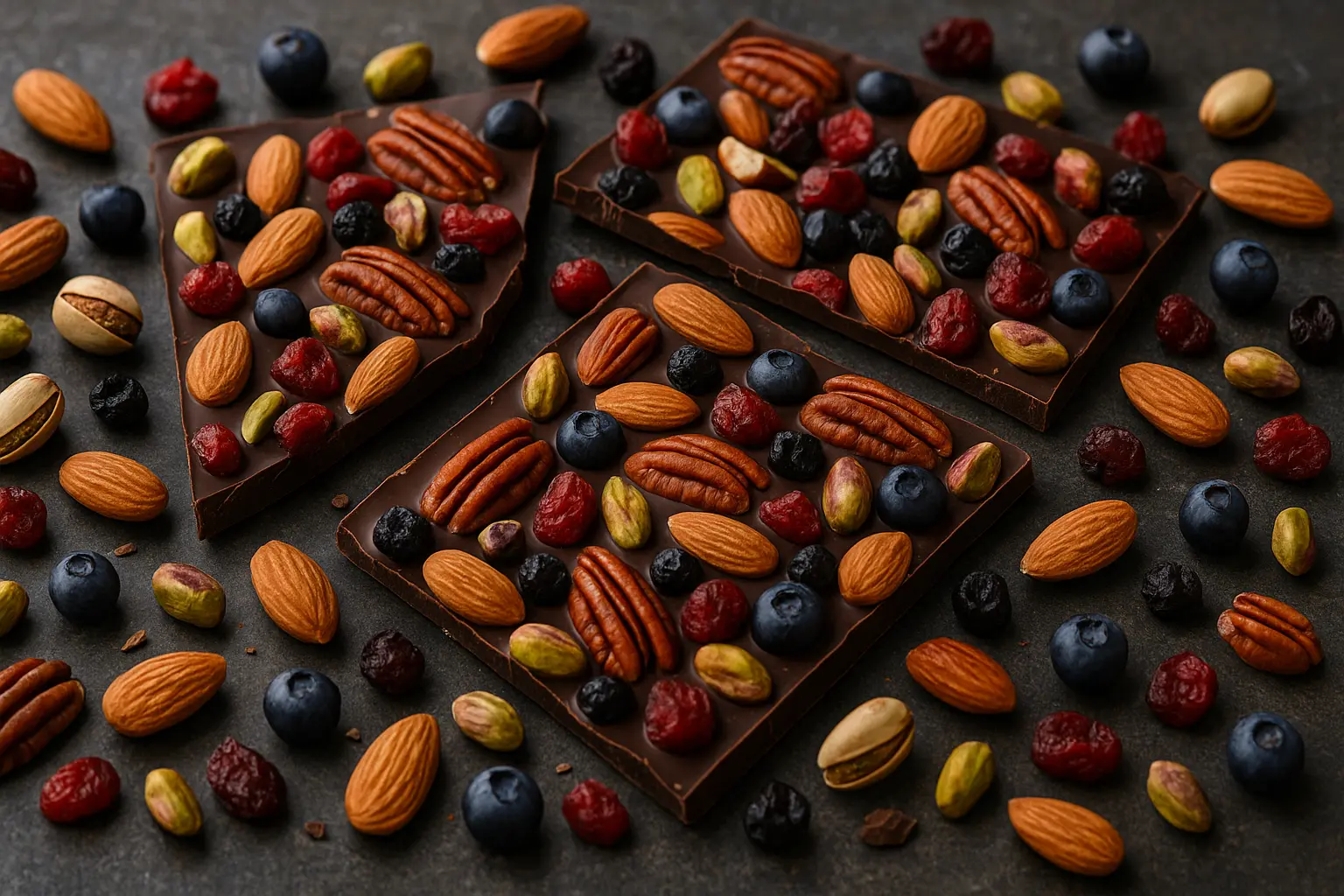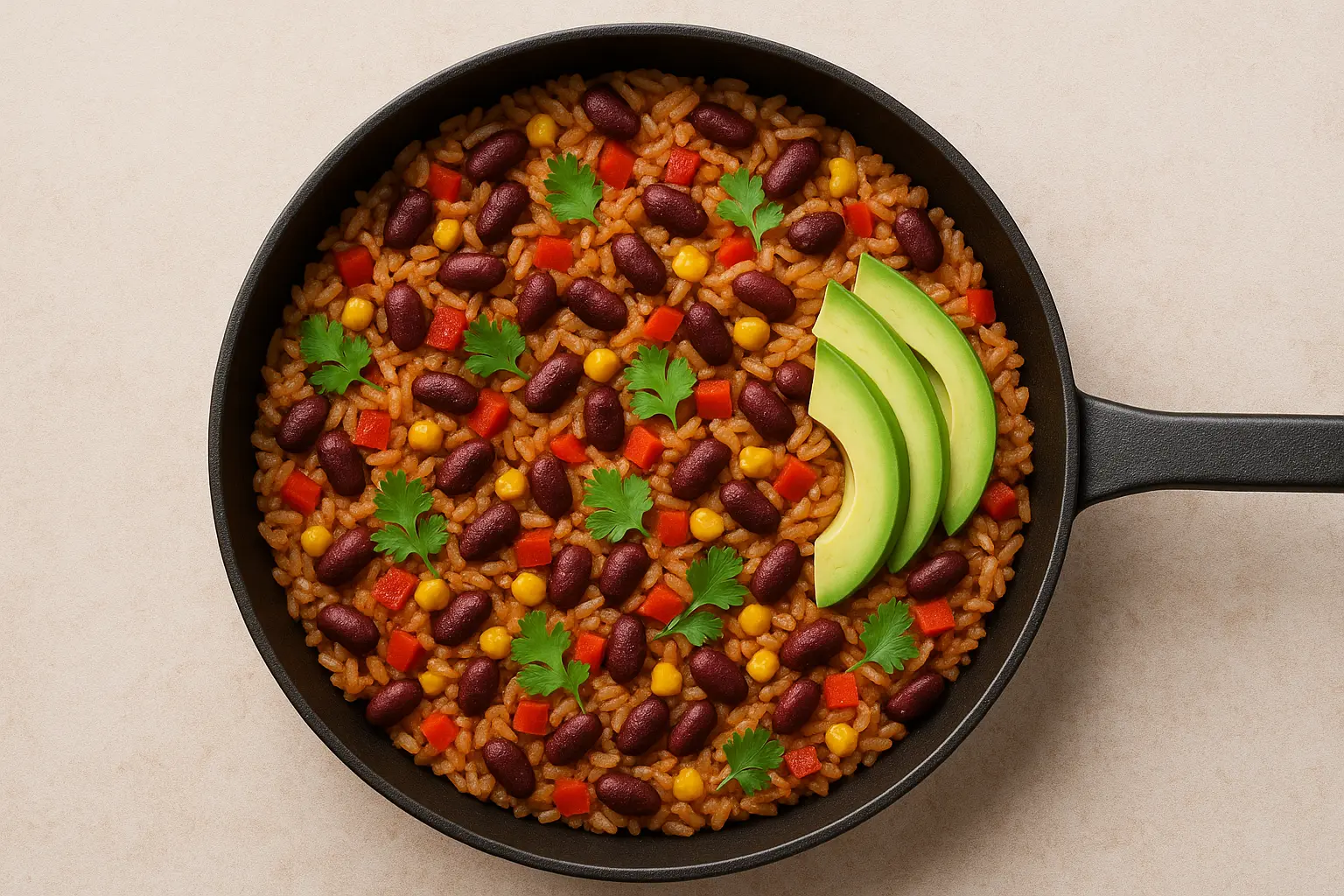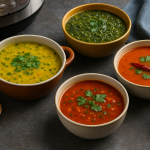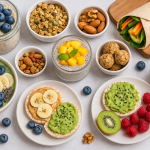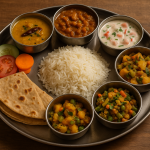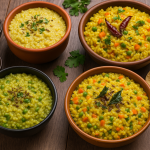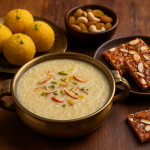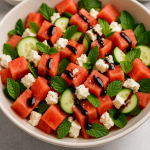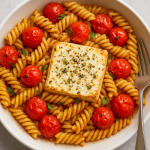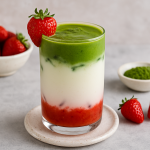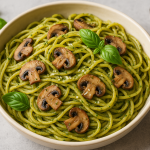If you love Thai takeout but dread the waiting time or price tag, these Quick Thai Peanut Noodles will be your weeknight savior. In just 25 minutes, you can bring restaurant-quality noodles to your kitchen—creamy, slightly spicy, full of umami, and completely vegan-friendly.
This recipe is inspired by classic Thai flavors: peanut, soy, lime, and a touch of heat from chili. What makes it even better? It’s infinitely adaptable. Whether you have rice noodles, spaghetti, soba, or even ramen—this peanut sauce clings to anything beautifully.
Let’s dive deep into the making of this fast, wholesome, and satisfying Thai-inspired noodle dish.

🥢 Why You’ll Love These Thai Peanut Noodles
- Quick & Easy: Ready in less than 30 minutes. Perfect for weeknights.
- Vegan-Friendly: 100% plant-based without sacrificing richness or flavor.
- Meal-Prep Approved: Keeps beautifully in the fridge for 3–4 days.
- Customizable: Add your favorite veggies, tofu, or even edamame for protein.
- Family Favorite: Mild spice that can be adjusted to everyone’s liking.
These noodles check every box for convenience and taste—making them one of the best dishes to have in your rotation when you want something cozy, quick, and full of flavor.
🍜 Ingredients You’ll Need
Here’s what goes into your Thai peanut noodle masterpiece:
For the Noodles
- 250g rice noodles (or soba, spaghetti, or ramen)
- 1 tablespoon sesame oil (or neutral oil)
- 1 cup thinly sliced bell peppers (any color)
- 1 cup shredded carrots
- 1 cup broccoli florets (optional)
- 1/2 cup sliced green onions
- 1/4 cup chopped roasted peanuts (for topping)
- Fresh cilantro and lime wedges (for garnish)
For the Peanut Sauce
- 1/3 cup creamy peanut butter (unsweetened)
- 2 tablespoons soy sauce (or tamari for gluten-free)
- 1 tablespoon rice vinegar
- 1 tablespoon maple syrup (or brown sugar)
- 1 tablespoon lime juice
- 1 teaspoon chili garlic sauce (adjust for spice)
- 1 clove garlic, minced
- 1/4 cup warm water (to thin out sauce)
- Optional: 1 teaspoon grated ginger for extra freshness
🔪 Step-by-Step Instructions
Let’s break this down into simple, foolproof steps that anyone can follow—even on a tired Wednesday evening.
Step 1: Cook the Noodles
- Boil water in a large pot and cook the noodles according to package instructions.
- Drain and rinse under cold water to stop cooking.
- Toss with a little sesame oil to prevent sticking and set aside.
Step 2: Make the Peanut Sauce
- In a mixing bowl, whisk together peanut butter, soy sauce, rice vinegar, maple syrup, lime juice, chili garlic sauce, and garlic.
- Add warm water gradually until the sauce reaches your desired creamy consistency.
- Taste and adjust—more lime for tang, more soy sauce for salt, more chili for heat.
Step 3: Sauté the Veggies
- Heat sesame oil in a pan over medium heat.
- Add the bell peppers, carrots, and broccoli. Sauté for 3–5 minutes until tender-crisp.
- Add green onions at the end for freshness.
Step 4: Combine Everything
- Add the cooked noodles into the pan with the veggies.
- Pour the peanut sauce over and toss everything gently to coat.
- If it feels too thick, add a splash of warm water or coconut milk to loosen it.
Step 5: Garnish and Serve
Top your noodles with chopped peanuts, fresh cilantro, and a squeeze of lime.
Serve hot—or chill and enjoy as a cold noodle salad!
🌿 Customization Ideas
One of the best parts of this recipe is how flexible it is. Here’s how to make it your own:
Protein Options
- Tofu or Tempeh: Pan-fry cubes until golden and add them in for protein.
- Edamame: Boil and toss for an easy plant protein boost.
- Chicken or Prawns: For non-vegan eaters, this sauce pairs wonderfully with grilled chicken or shrimp.
Vegetable Variations
- Add snow peas, mushrooms, bok choy, baby corn, or spinach for more texture and color.
- Frozen veggies also work well for a budget-friendly shortcut.
Spice Adjustments
- Keep it mild for kids or add more chili paste or sriracha for an extra kick.
- Sprinkle crushed red pepper flakes at the end for heat without altering the sauce balance.
Noodle Alternatives
- Rice noodles for a classic Thai feel.
- Whole wheat spaghetti for a fiber boost.
- Zucchini or carrot noodles for a low-carb version.
🥢 Pro Tips for Perfect Thai Peanut Noodles
- Use fresh lime juice. Bottled versions can make the sauce too sour.
- Don’t overcook noodles. Slightly al dente noodles hold the sauce better.
- Balance is key. Thai cooking is all about sweet, salty, sour, and spicy harmony. Taste and adjust as you go.
- Thin sauce gradually. Add water or coconut milk a tablespoon at a time for the perfect silky coating.
- Meal prep smartly. Store sauce separately if you’re prepping ahead—combine when ready to eat.
🧂 The Flavor Science Behind Thai Peanut Sauce
The magic of Thai peanut sauce lies in balance. Each element plays a role:
- Peanut Butter: Adds richness and creaminess.
- Soy Sauce: Introduces umami and salt.
- Lime Juice: Provides brightness to cut the heaviness.
- Maple Syrup or Sugar: Balances the salt and acid.
- Garlic & Chili: Build complexity and spice.
In traditional Thai cuisine, peanut-based sauces are often paired with satay or salads. Here, the same flavor base transforms into a luscious noodle sauce—comforting, filling, and utterly addictive.
🕓 Make-Ahead and Storage Tips
- Fridge: Store in an airtight container for up to 4 days. Add a splash of water before reheating to refresh the sauce.
- Freezer: The sauce freezes beautifully. Store in ice cube trays or small containers.
- Meal Prep Tip: Cook noodles and veggies, store them separately, and mix fresh sauce when ready to eat. Keeps flavors vibrant!
🧘♀️ Health Benefits
This dish may feel indulgent, but it’s surprisingly nutritious:
- Healthy Fats: Peanut butter and sesame oil provide monounsaturated fats that support heart health.
- Protein: From peanuts and tofu or edamame, it keeps you fuller longer.
- Fiber: Veggies and whole-grain noodles support digestion.
- Low Cholesterol: Completely plant-based, making it heart-friendly.
- No Dairy: Naturally dairy-free and vegan-friendly.
You can make it even lighter by using less oil and choosing rice noodles or soba for easy digestion.
🥄 Serving Suggestions
- As a Main Course: Pair with Thai iced tea or coconut water for a refreshing combo.
- As a Side Dish: Serve alongside spring rolls or crispy tofu bites.
- For Lunchboxes: Pack cold noodles with a side of extra sauce and lime wedge.
- As a Potluck Dish: Serve chilled with colorful veggies for a crowd-pleaser.
🧑🍳 Thai Peanut Noodles for Every Occasion
These noodles aren’t just for rushed evenings—they fit into almost any scenario:
- Weeknight Dinners: When you’re short on time but want flavor.
- Meal Prep Sundays: Cook a big batch for easy weekday lunches.
- Date Night at Home: Quick to make but feels gourmet.
- Back-to-School Lunches: Kid-friendly if you skip the spice.
- Vegan Gatherings: Everyone loves this dish, even non-vegans!
🌍 The Cultural Connection: Thai Flavors, Global Appeal
While Thai peanut noodles are a Westernized take on authentic Thai flavors, the roots remain in traditional Thai cuisine’s balance philosophy.
Classic Thai dishes like Pad Thai, Satay, and Som Tum (green papaya salad) rely on the same balance of flavors—sweet, salty, spicy, sour, and savory. The peanut sauce we love in these noodles mirrors that balance, offering a comforting yet exotic taste profile that’s traveled the world.
The beauty of Thai cuisine lies in this adaptability. No matter where you live, the ingredients are accessible, and the flavors never fail to delight.
💡 Troubleshooting & FAQs
Q: My sauce is too thick! What should I do?
A: Add warm water or coconut milk, one tablespoon at a time, until it’s smooth and pourable.
Q: Can I make it without peanuts?
A: Yes! Try almond butter, cashew butter, or sunflower seed butter for a nut-free alternative.
Q: What if I don’t have rice noodles?
A: Spaghetti, ramen, or even soba noodles work just as well.
Q: Is it spicy?
A: Mildly. Adjust chili garlic sauce or omit it entirely for a no-spice version.
Q: Can I make this gluten-free?
A: Yes—use tamari or coconut aminos instead of soy sauce and gluten-free noodles.
🥢 Why It’s Perfect for Busy Weeknights
We all have those nights when cooking feels like a chore. This dish exists for exactly those moments.
You need:
- One pan.
- Minimal chopping.
- Pantry-staple ingredients.
- And less than 30 minutes.
The payoff? Comforting noodles that feel like a treat, not a compromise. It’s the kind of dish that transforms an ordinary weeknight into a mini Thai food celebration.
❤️ Final Thoughts
This Quick Thai Peanut Noodle recipe is the ultimate blend of speed, simplicity, and satisfaction. It’s one of those dishes that proves you don’t need complicated steps or fancy ingredients to make something extraordinary.
Whether you’re a seasoned cook or a beginner looking for a reliable dinner go-to, these noodles deliver every time—creamy, nutty, vibrant, and downright addictive.
Make it once, and it’ll earn a permanent place in your weeknight rotation.
Leave a comment
Your email address will not be published. Required fields are marked *


